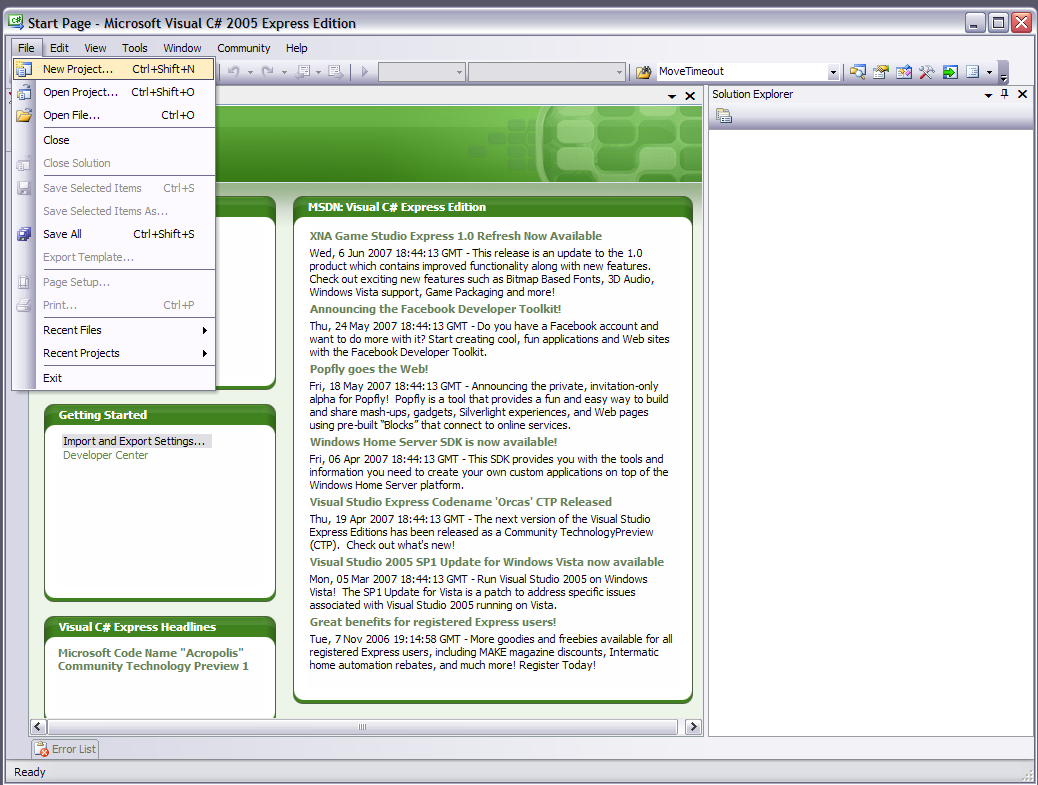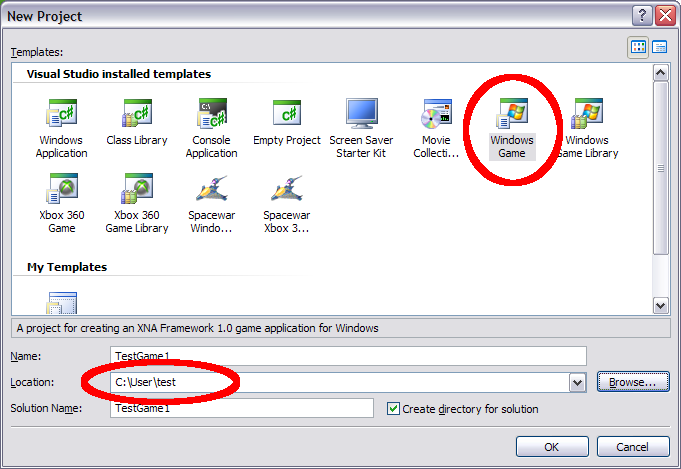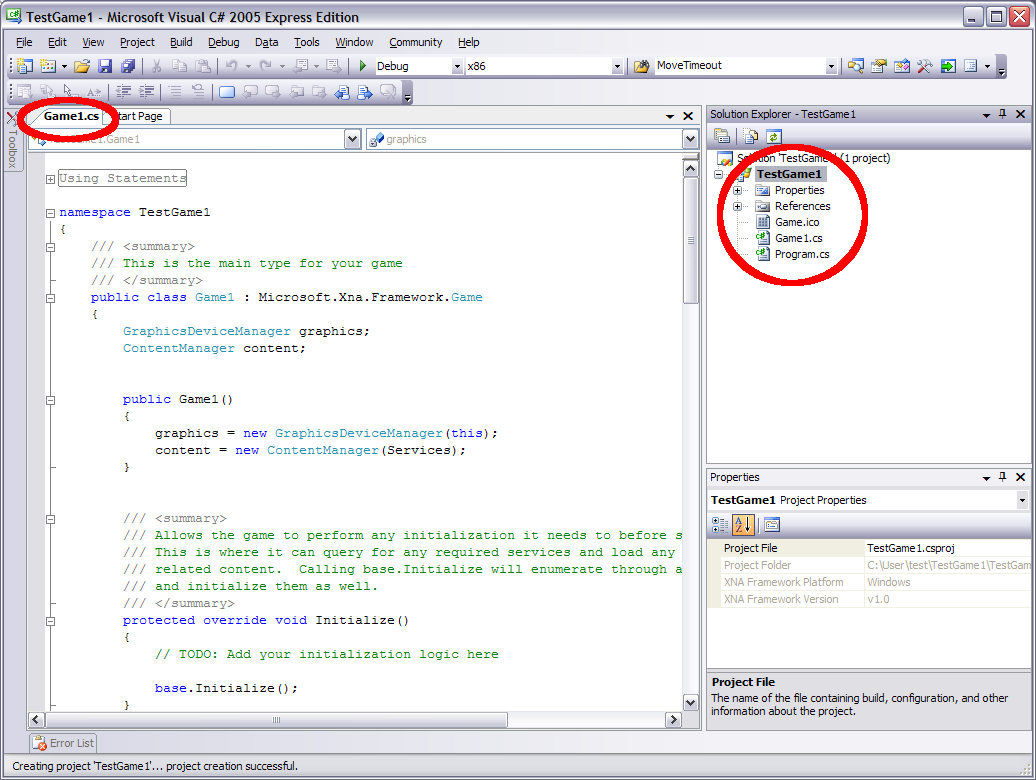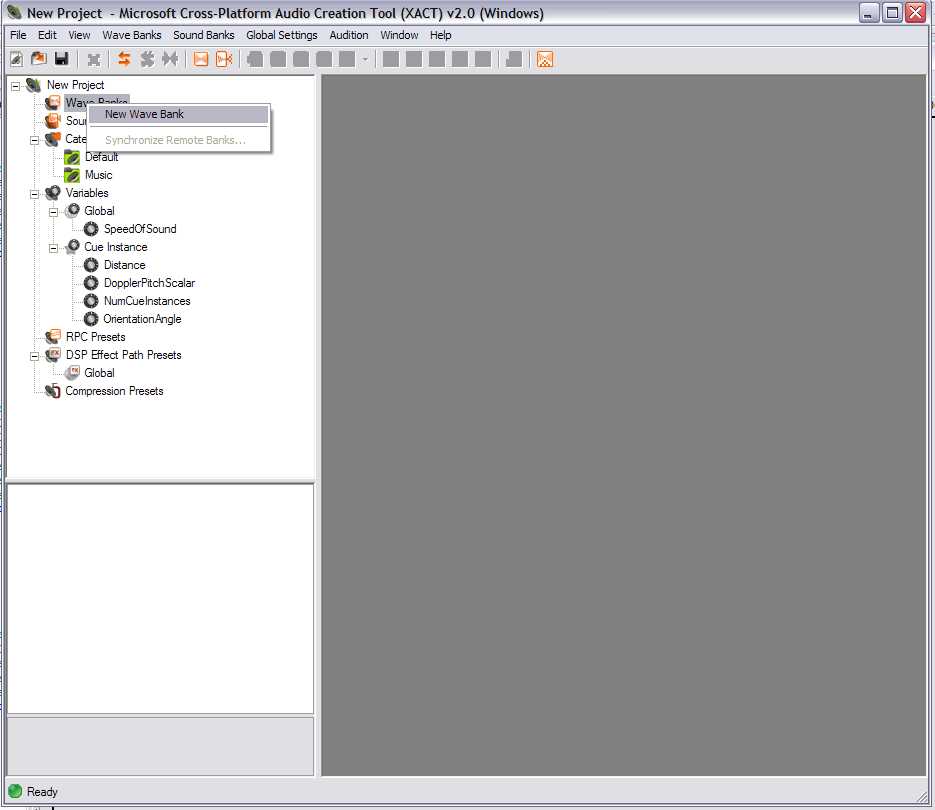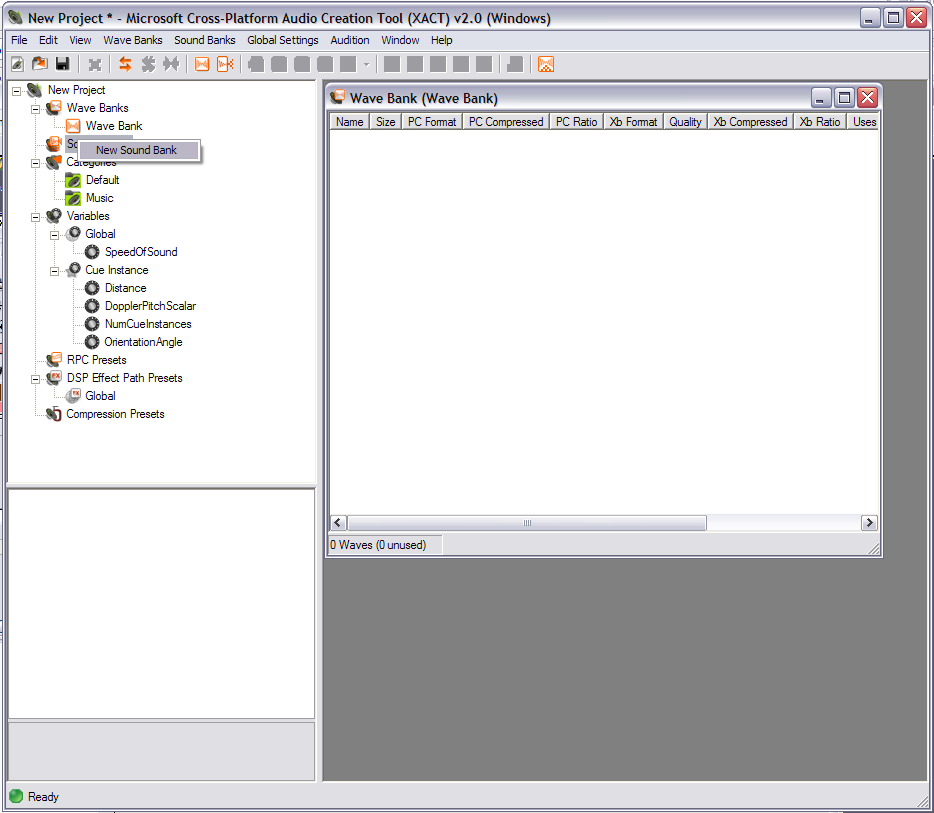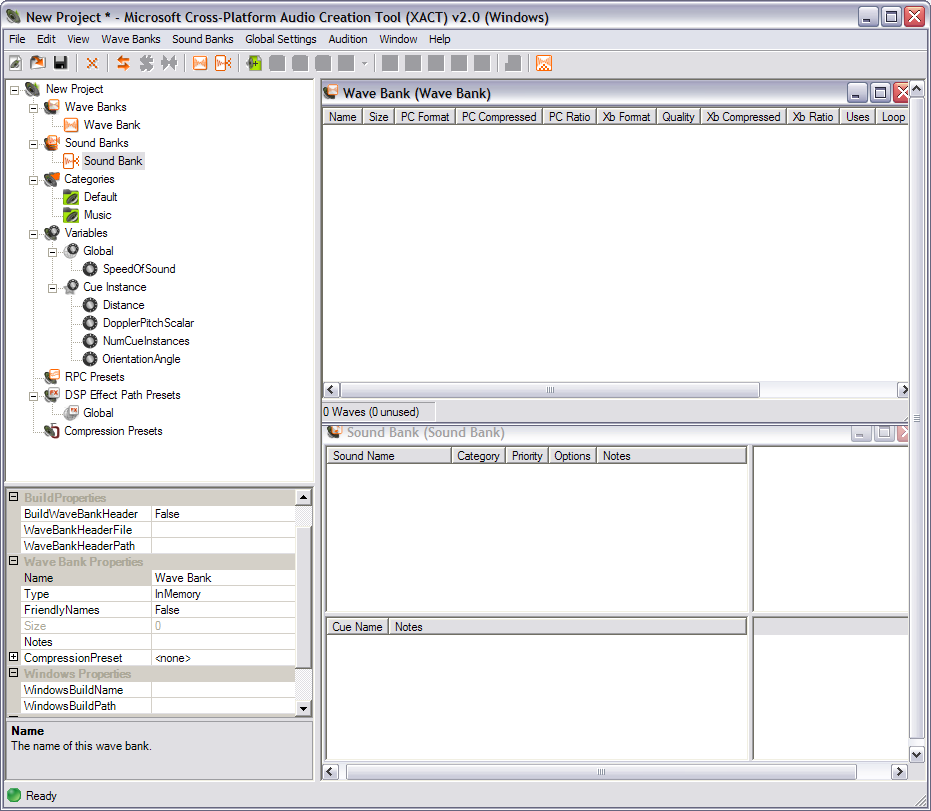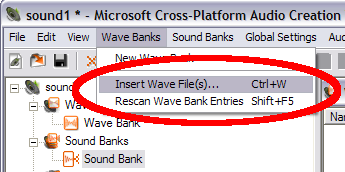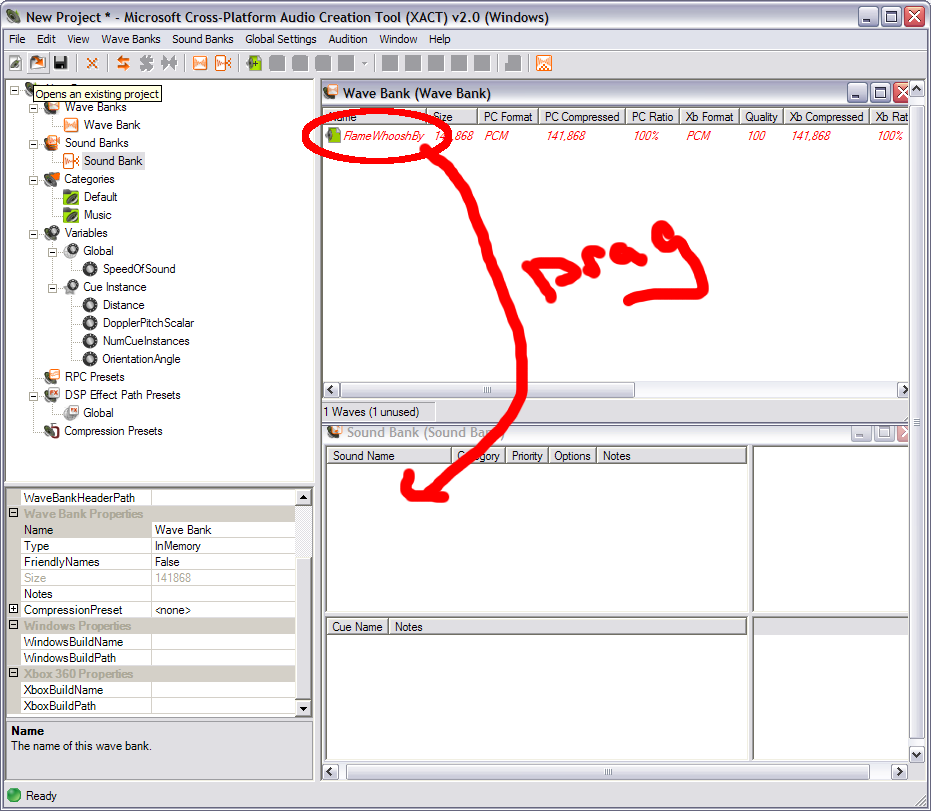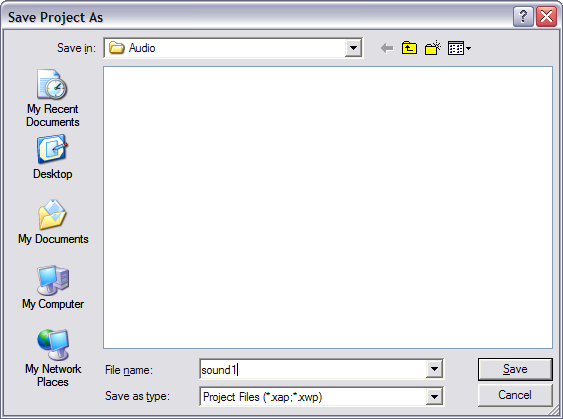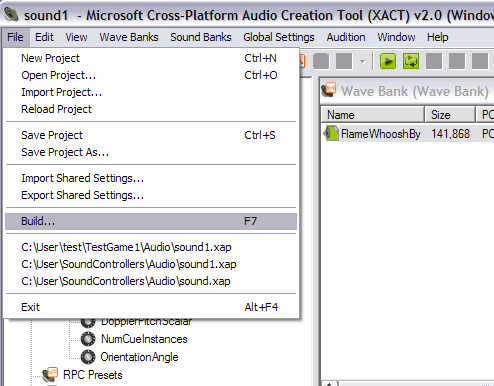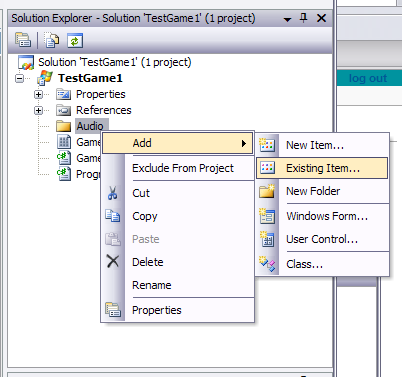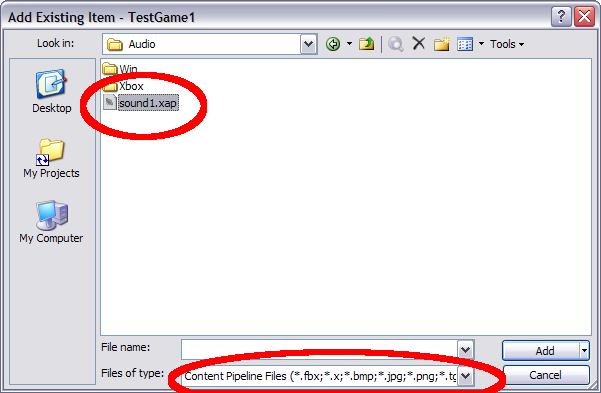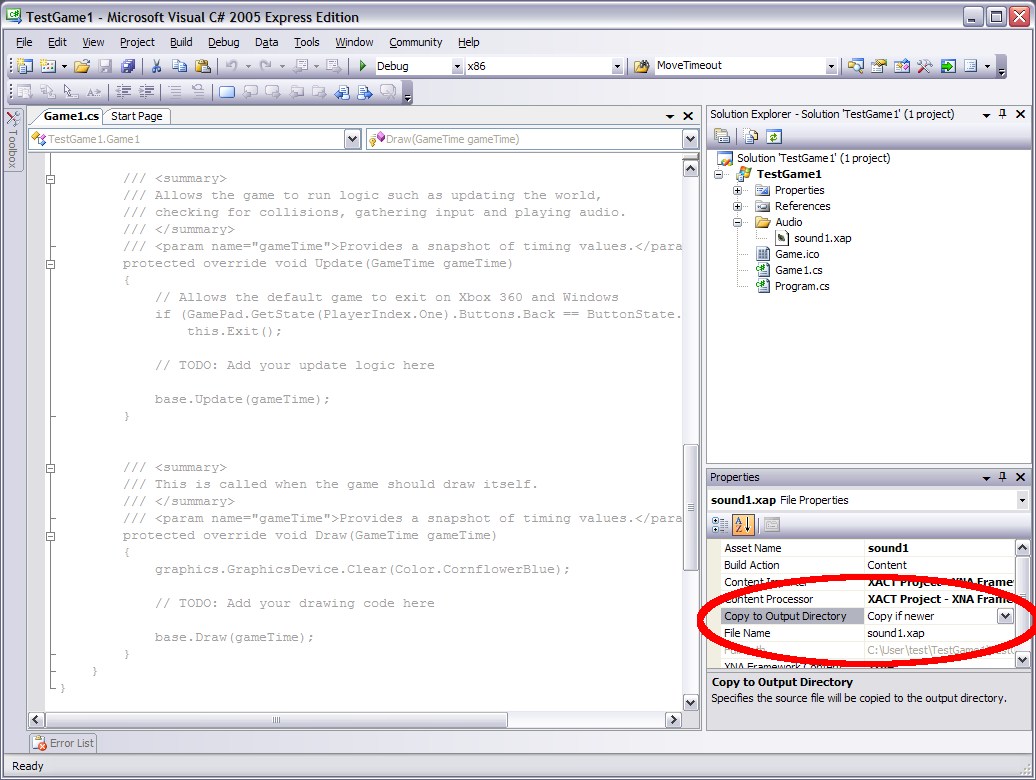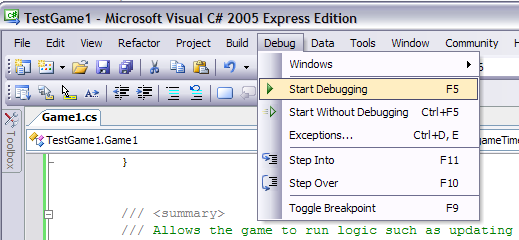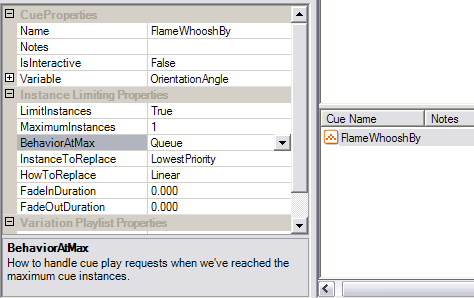Difference between revisions of "XNA First Sound Project"
m (Text replacement - "<csharp>" to "<syntaxhighlight lang="csharp" line="1" >") |
m (Text replacement - "syntaxhighlight lang="csharp" line="1" " to "syntaxhighlight lang="csharp"") |
||
| (One intermediate revision by the same user not shown) | |||
| Line 21: | Line 21: | ||
It should also open the Main Game file game1.cs | It should also open the Main Game file game1.cs | ||
| − | <syntaxhighlight lang="csharp | + | <syntaxhighlight lang="csharp"> |
#region Using Statements | #region Using Statements | ||
using System; | using System; | ||
| Line 129: | Line 129: | ||
} | } | ||
} | } | ||
| − | </ | + | </syntaxhighlight> |
All we need to do is to create a folder for the audio. Right click on the project and select 'New Folder' name the folder 'Audio'. | All we need to do is to create a folder for the audio. Right click on the project and select 'New Folder' name the folder 'Audio'. | ||
| Line 198: | Line 198: | ||
| − | <syntaxhighlight lang="csharp | + | <syntaxhighlight lang="csharp"> |
public class Game1 : Microsoft.Xna.Framework.Game | public class Game1 : Microsoft.Xna.Framework.Game | ||
{ | { | ||
| Line 210: | Line 210: | ||
content = new ContentManager(Services); | content = new ContentManager(Services); | ||
} | } | ||
| − | </ | + | </syntaxhighlight> |
add | add | ||
| Line 219: | Line 219: | ||
public SoundBank soundbank; | public SoundBank soundbank; | ||
| − | <syntaxhighlight lang="csharp | + | <syntaxhighlight lang="csharp"> |
public class Game1 : Microsoft.Xna.Framework.Game | public class Game1 : Microsoft.Xna.Framework.Game | ||
{ | { | ||
| Line 235: | Line 235: | ||
graphics = new GraphicsDeviceManager(this); | graphics = new GraphicsDeviceManager(this); | ||
content = new ContentManager(Services); | content = new ContentManager(Services); | ||
| − | </ | + | </syntaxhighlight> |
now add to the constructor | now add to the constructor | ||
| Line 245: | Line 245: | ||
| − | <syntaxhighlight lang="csharp | + | <syntaxhighlight lang="csharp"> |
public Game1() | public Game1() | ||
{ | { | ||
| Line 256: | Line 256: | ||
soundbank = new SoundBank(engine, @"Audio\Sound Bank.xsb"); | soundbank = new SoundBank(engine, @"Audio\Sound Bank.xsb"); | ||
} | } | ||
| − | </ | + | </syntaxhighlight> |
and finally add to the update method | and finally add to the update method | ||
| Line 263: | Line 263: | ||
soundbank.GetCue("FlameWhooshBy").Play(); | soundbank.GetCue("FlameWhooshBy").Play(); | ||
| − | <syntaxhighlight lang="csharp | + | <syntaxhighlight lang="csharp"> |
protected override void Update(GameTime gameTime) | protected override void Update(GameTime gameTime) | ||
{ | { | ||
| Line 277: | Line 277: | ||
soundbank.GetCue("FlameWhooshBy").Play(); | soundbank.GetCue("FlameWhooshBy").Play(); | ||
} | } | ||
| − | </ | + | </syntaxhighlight> |
Now you can test you game by running the project (press F5) or | Now you can test you game by running the project (press F5) or | ||
Latest revision as of 03:20, 9 February 2016
Setup Project in GSE
Open Visual Studio C# Game Studio Express
Select New Project
Select Windows Game and Create a new folder on a local dirve
Game Studio Express creates the default game files
It should also open the Main Game file game1.cs
#region Using Statements
using System;
using System.Collections.Generic;
using Microsoft.Xna.Framework;
using Microsoft.Xna.Framework.Audio;
using Microsoft.Xna.Framework.Content;
using Microsoft.Xna.Framework.Graphics;
using Microsoft.Xna.Framework.Input;
using Microsoft.Xna.Framework.Storage;
#endregion
namespace TestGame1
{
/// <summary>
/// This is the main type for your game
/// </summary>
public class Game1 : Microsoft.Xna.Framework.Game
{
GraphicsDeviceManager graphics;
ContentManager content;
public Game1()
{
graphics = new GraphicsDeviceManager(this);
content = new ContentManager(Services);
}
/// <summary>
/// Allows the game to perform any initialization it needs to before starting to run.
/// This is where it can query for any required services and load any non-graphic
/// related content. Calling base.Initialize will enumerate through any components
/// and initialize them as well.
/// </summary>
protected override void Initialize()
{
// TODO: Add your initialization logic here
base.Initialize();
}
/// <summary>
/// Load your graphics content. If loadAllContent is true, you should
/// load content from both ResourceManagementMode pools. Otherwise, just
/// load ResourceManagementMode.Manual content.
/// </summary>
/// <param name="loadAllContent">Which type of content to load.</param>
protected override void LoadGraphicsContent(bool loadAllContent)
{
if (loadAllContent)
{
// TODO: Load any ResourceManagementMode.Automatic content
}
// TODO: Load any ResourceManagementMode.Manual content
}
/// <summary>
/// Unload your graphics content. If unloadAllContent is true, you should
/// unload content from both ResourceManagementMode pools. Otherwise, just
/// unload ResourceManagementMode.Manual content. Manual content will get
/// Disposed by the GraphicsDevice during a Reset.
/// </summary>
/// <param name="unloadAllContent">Which type of content to unload.</param>
protected override void UnloadGraphicsContent(bool unloadAllContent)
{
if (unloadAllContent == true)
{
content.Unload();
}
}
/// <summary>
/// Allows the game to run logic such as updating the world,
/// checking for collisions, gathering input and playing audio.
/// </summary>
/// <param name="gameTime">Provides a snapshot of timing values.</param>
protected override void Update(GameTime gameTime)
{
// Allows the default game to exit on Xbox 360 and Windows
if (GamePad.GetState(PlayerIndex.One).Buttons.Back == ButtonState.Pressed)
this.Exit();
// TODO: Add your update logic here
base.Update(gameTime);
}
/// <summary>
/// This is called when the game should draw itself.
/// </summary>
/// <param name="gameTime">Provides a snapshot of timing values.</param>
protected override void Draw(GameTime gameTime)
{
graphics.GraphicsDevice.Clear(Color.CornflowerBlue);
// TODO: Add your drawing code here
base.Draw(gameTime);
}
}
}
All we need to do is to create a folder for the audio. Right click on the project and select 'New Folder' name the folder 'Audio'.
Now copy at least one 44,100 Hz wav file to the folder to use in the test project. You can do this in windows.
Now we can use XACT http://msdn2.microsoft.com/en-us/library/bb174772.aspx
XACT Time
Open XACT
Add a new WaveBank. Wave Banks hold a collection of sound files.
Now create a new Sound Bank. A Sound Bank is a collection of Events, Tracks and Cues.
I like to tile the XACT windows horizontally
Now we can import sound files.
Select Wave Bank and Import Files or right click on the Wave Bank Window and select Import Wave.
Now we have a sound in the Wave Bank we need to add it to the Sound Bank. Drah the sound from the Wave Bank window to the Sound Bank window.
Now that the sound is in the Sound Bank we need to add it as a Cue. Drag the sound from the Sound Bank to the Cue section.
Now you should have the sound in all three sections.
Now we have a sound in the Wave Bank and Sound Bank and a Named Cue we are ready to save our XACT project. Save the project as 'sound1.xap' in the 'Audio' folder that you created in the Game Studio Express Project.
The last step is to build the XACT project to the GSE and integrate it into the game pipeline. Select build from the File menu in XACT.
Import into GSE
Time to Code
Now we need to add the code to the project to play the sound
public class Game1 : Microsoft.Xna.Framework.Game
{
GraphicsDeviceManager graphics;
ContentManager content;
public Game1()
{
graphics = new GraphicsDeviceManager(this);
content = new ContentManager(Services);
}
add
//Declare Audio Objects
public AudioEngine engine;
public WaveBank wavebank;
public SoundBank soundbank;
public class Game1 : Microsoft.Xna.Framework.Game
{
GraphicsDeviceManager graphics;
ContentManager content;
//Declare Audio Objects
public AudioEngine engine;
public WaveBank wavebank;
public SoundBank soundbank;
public Game1()
{
graphics = new GraphicsDeviceManager(this);
content = new ContentManager(Services);
now add to the constructor
//initalize Audio Objects
engine = new AudioEngine(@"Audio\sound1.xgs");
wavebank = new WaveBank(engine, @"Audio\Wave Bank.xwb");
soundbank = new SoundBank(engine, @"Audio\Sound Bank.xsb");
public Game1()
{
graphics = new GraphicsDeviceManager(this);
content = new ContentManager(Services);
//initalize Audio Objects
engine = new AudioEngine(@"Audio\sound1.xgs");
wavebank = new WaveBank(engine, @"Audio\Wave Bank.xwb");
soundbank = new SoundBank(engine, @"Audio\Sound Bank.xsb");
}
and finally add to the update method
//Play Sound
soundbank.GetCue("FlameWhooshBy").Play();
protected override void Update(GameTime gameTime)
{
// Allows the default game to exit on Xbox 360 and Windows
if (GamePad.GetState(PlayerIndex.One).Buttons.Back == ButtonState.Pressed)
this.Exit();
// TODO: Add your update logic here
base.Update(gameTime);
//Play Sound
soundbank.GetCue("FlameWhooshBy").Play();
}
Now you can test you game by running the project (press F5) or
